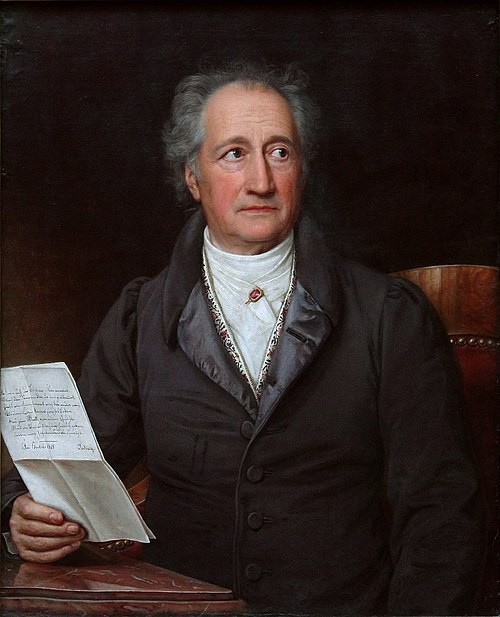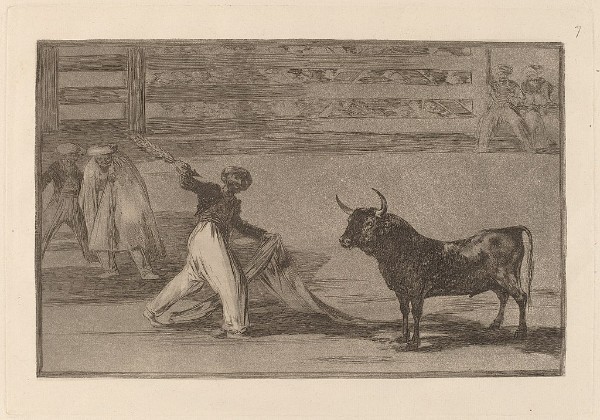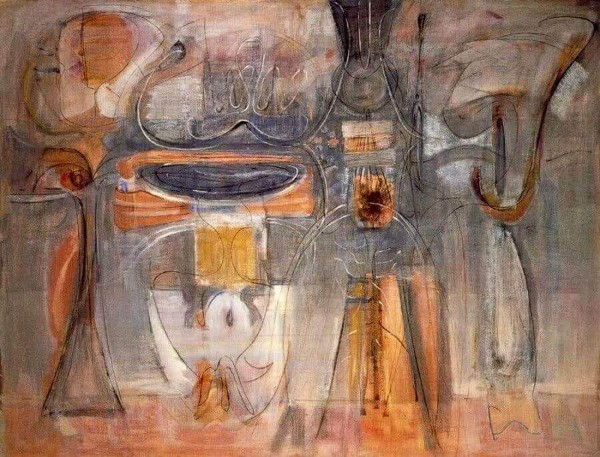The Swiss Neoclassical painter Angelika Kauffmann (1741–1807) made her career in London and Rome in the field of history painting, portraiture, landscape painting, and decorative painting.
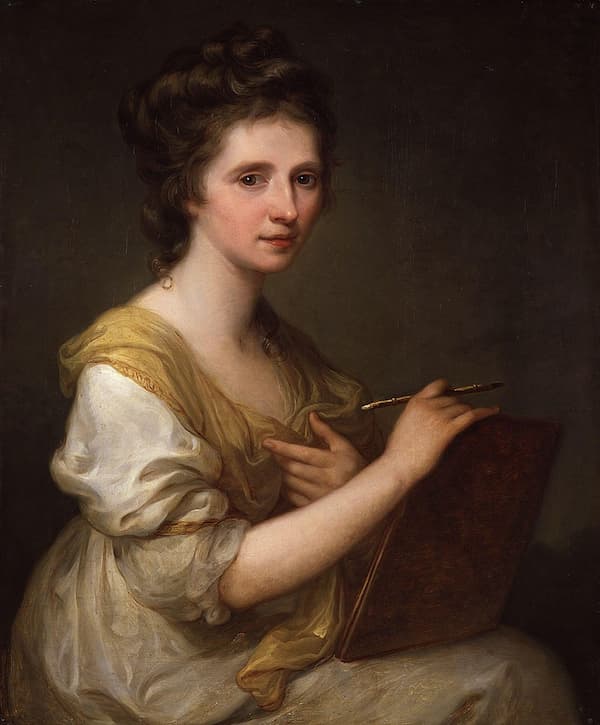
Angelika Kaufmann: Self Portrait, 1770–1775 (London: National Portrait Gallery)
Her father, Joseph Johann Kauffmann, was an Austrian muralist and painter and he trained Angelika in art. Together, they travelled around Austria, Switzerland, and Italy, with Angelika as her father’s assistant. By age 12, she was already known in the region for her skills as a portraitist, with clients in the noble and ecclesiastical classes. An intelligent child, she was fluent in German, Italian, French, and English.
She was also a skilled singer and had to make an early choice between opera and art. Art won, but later portrait sitters noted her singing skills.
In 1757, at her mother’s death, her father decided to relocate to Milan; at age 22, she was made a member of the Accademia delle Arti del Disegno, the artists’ academy in Florence. Members included the leading Florentine artists, such as Michelangelo, Lazzaro Donati, Francesco da Sangallo, Bronzino, Benvenuto Cellini, and Giorgio Vasari. Most of the members were men, and Artemisia Gentileschi was the first woman member. The family’s move to Florence in 1763 brought her awareness of the Neoclassical style that would become her own. She was a member of the Accademia di San Luca at age 23.
Her language skills came to the fore as she became the favoured painter of the English community in Florence, Rome, and Naples.
In 1764, when living in Venice, she made a visit to London at the invitation of the British Ambassador’s wife, Lady Wentworth.
Her first painting was a portrait of the actor David Garrick, and she quickly became a favourite of the royal family. Lady Wentworth opened doors for her, and her talent quickly took her to the top. One particular friend was Sir Joshua Reynolds, who supported her work. He painted a picture of her, and she of him:
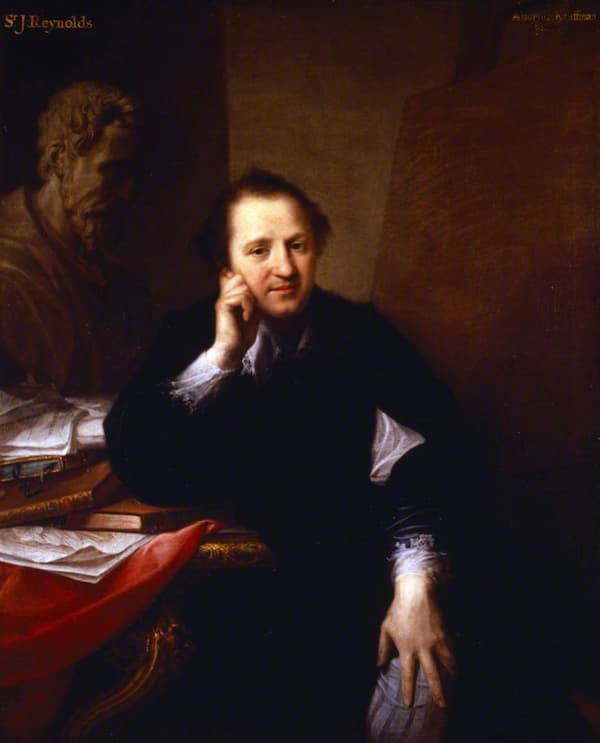
Angelika Kaufmann: Sir Joshua Reynolds, 1767 (Plymouth: National Trust, Saltram)
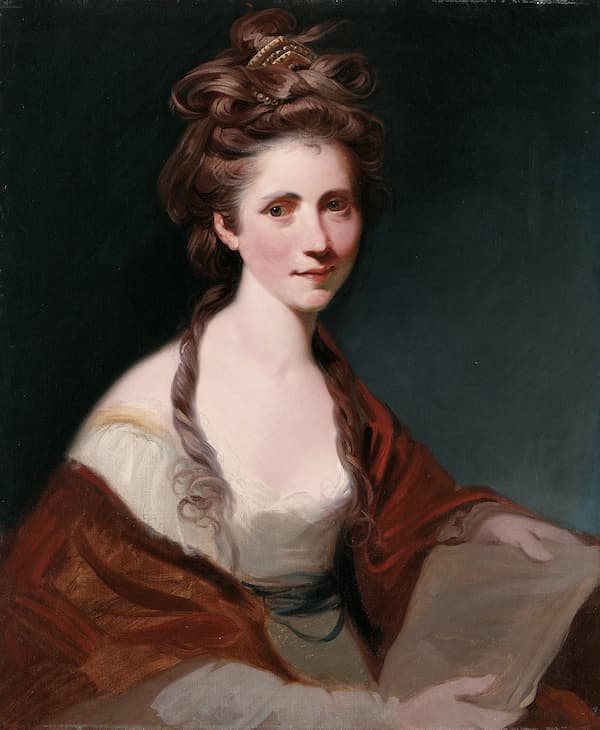
Sir Joshua Reynolds: Portrait of Angelica Kauffmann, undated
London, along with Rome, was the centre of Neoclassical painting, and Kauffmann was in the middle of it all. In 1768, she was one of the founding members of the Royal Academy of Arts and one of only two female members. While in London, she married Count Frederick de Horn, a self-styled Swedish count who was quickly found to be an impostor. They married on 22 November 1767 and separated quickly thereafter. Angelika and her father paid Horn to leave London, and he moved to the continent. The marriage was dissolved in February 1768. Horn died in 1780 or 1781, and Kauffmann moved to Rome.
By 1787, Kauffmann was the most famous and successful living painter in Rome and an important figure in Roman society. Writers such as Johann Wolfgang von Goethe and Johann Gottfried Herder visited her on their Italian trips, as did the Grand Duchess Anna Amelia of Saxe-Weimar.
Kauffmann continued to feel the pull between art and music, and in 1794, painted her position in a self-portrait.
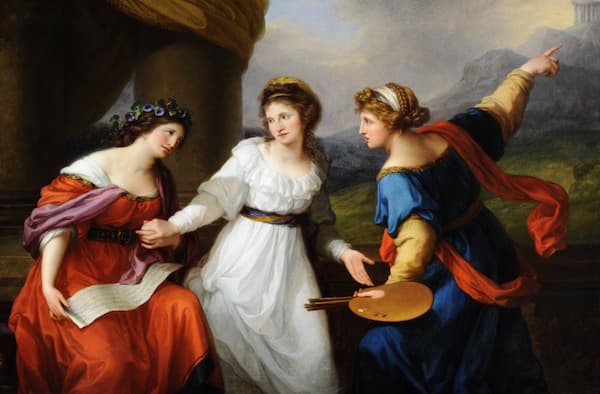
Angelika Kauffmann: Self-Portrait Hesitating Between Painting and Music,1794 (Nostell Priory, West Yorkshire)
At her death in Rome on 5 November 1807, her funeral was arranged by the Neoclassical sculptor Antonio Canova and attended by representatives from both the Roman and foreign academies. Part of the funeral procession was the carrying of two of her own works, in obvious emulation of Raphael’s funeral in 1520.
Angelika Kauffmann’s connection with the Schubertiade came through her father. Although Angelika was born in Chur, Switzerland, her father’s home village was Schwarzenberg, Austria. Both Joseph and Angelika did work in the village, creating frescos of the apostles and the high altarpiece for the local bishop. She maintained a connection to the village even after her move to Italy in the 1760s.
The Angelika Kauffmann Museum was established in Schwarzenberg in 2007 and is famed for its exhibitions of unknown Kauffmann works that are held by local residents.
Also in Schwarzenberg is the Angelika Kauffmann Hall. This 600-seat hall is built in a timber-frame building and offers outstanding views over the surrounding mountain pastures. Its acoustics are perfect for chamber music and have been placed on a level with London’s Wigmore Hall. Used exclusively for the annual Schubertiade, this year celebrating its 50th year, the Angelika Kauffmann Hall has been used by the festival since April 1994, when it was used for the opening concert of the 19th season.
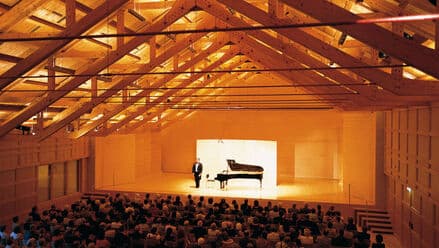
Angelika Kaufmann Hall
It is used as a recording venue for selected concerts by artists who have appeared at the Schubertiade.
Franz Schubert: Rosamunde, D. 797 – No. 3b. Der Vollmond strahlt auf Bergeshöhn, “Romanze” (Elisabeth Kulman, mezzo-soprano; Kutrowatz, Eduard piano)
The Hall was originally designed by the architect Bartle Moosbrugger in 1984 and, over time, more was demanded of the venue, particularly as it became more and more central to the Schubertiade needs. In 2001, the hall was extended by 7 meters, the side rooms expanded, and the foyer augmented by the Austrian firm of HK Architekten. It has become the principal Schubertiade venue and has been described as having a ‘plain elegance’. The architect said that ‘the architectural challenge was to keep the quality of the existing buildings, and to add the new rooms gently, without altering the overall image of the hall, which now has a high profile’. This explains the restrained and serving design approach in the newly added parts. The keyword is ‘gently’, and the expansion (while seeming to not expand) has made the Hall even more useful to the Schubertiade vision.
Clara Schumann: Loreley (Diana Damrau, soprano; Helmut Deutsch, piano)
The Schubertiade 2025 in Schwarzenberg will take place in the Angelika Kauffmann Hall from 21 June through 29 June and from 26 August through 3 September. A performance of lieder by Christoph Prégardien and Michael Gees, a chamber concert by the Hagen Quartet with Gautier Capuçon, and a piano recital by Igor Levit are just the start of wonderful weeks at the Schubertiade in the Angelika Kauffmann Hall. Other sessions of the Schubertiade, from 27 April to 4 May and 10 to 14 July, will be held in Markus Sittikus Hall in Hohenems, Austria.
For more of the best in classical music, sign up for our E-Newsletter

